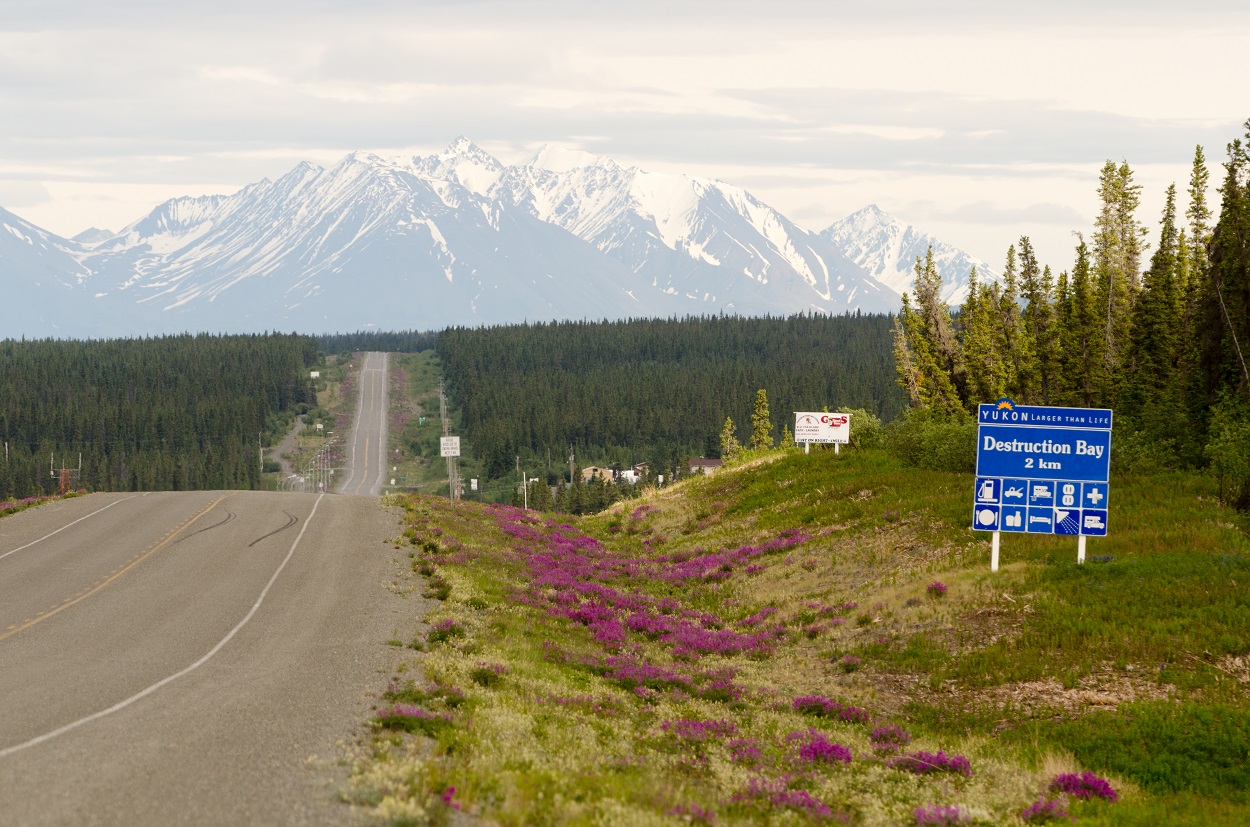
Driving on permafrost-affected roads
These roads are unlike other roads you’ve driven. You’ll need to adjust your driving habits to stay safe while navigating these stretches of highway.
What is permafrost?
Throughout much of the Yukon, there’s a layer of frozen earth under the ground’s surface called permafrost. Permafrost is ground that remains frozen for two or more years – and in many cases, much longer!
The type of permafrost you'll encounter will vary depending on where you are in the Yukon.
Continuous permafrost zones
These zones have permafrost beneath more than 90 per cent of the entire ground surface, except beneath large rivers and deep lakes. The Dempster Highway is within this zone.
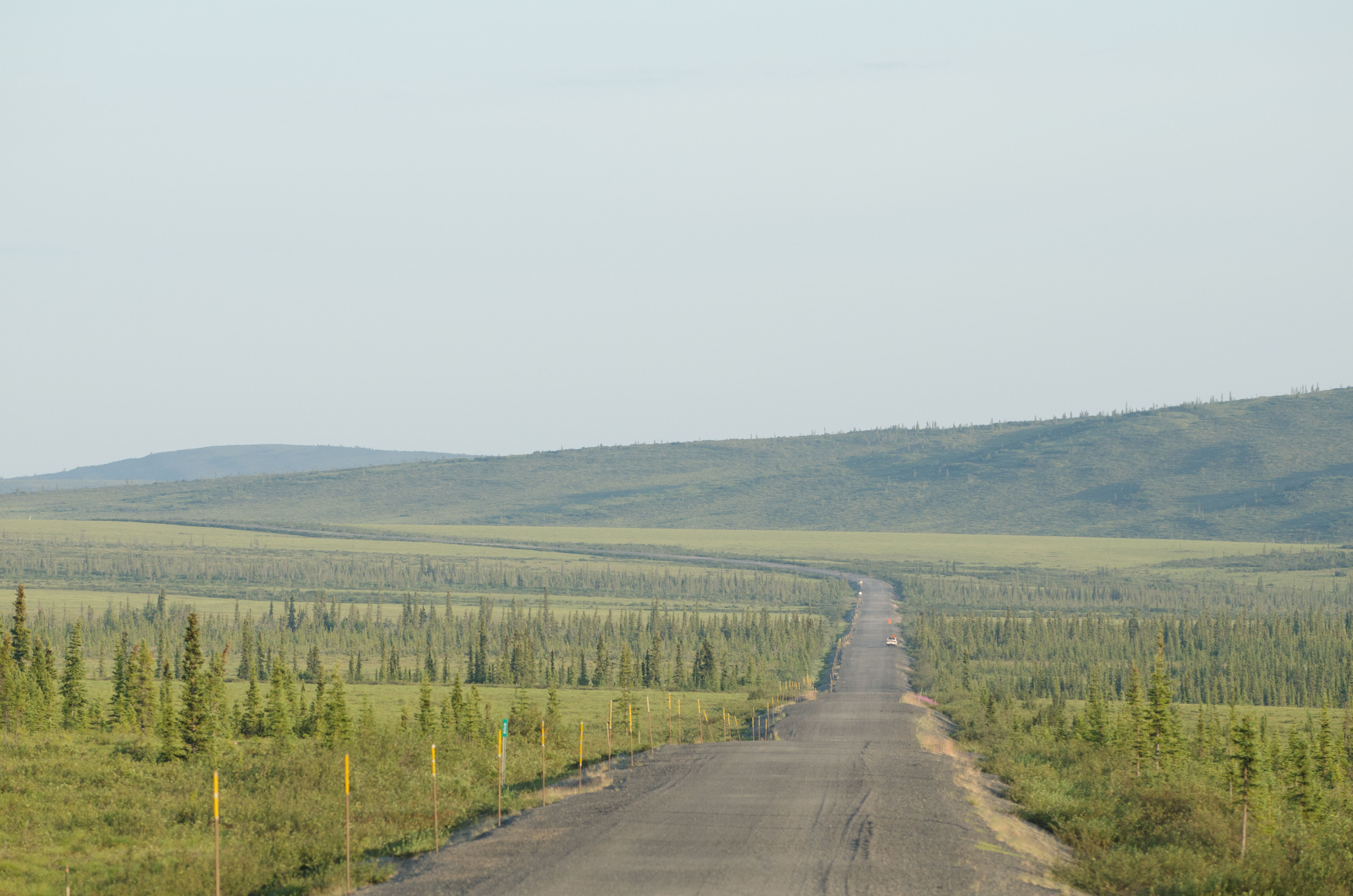
Extensive discontinuous permafrost zones
These zones have permafrost beneath 50 to 90 per cent of the surface. Large portions of the Alaska, North Klondike and Robert Campbell highways are within this zone.
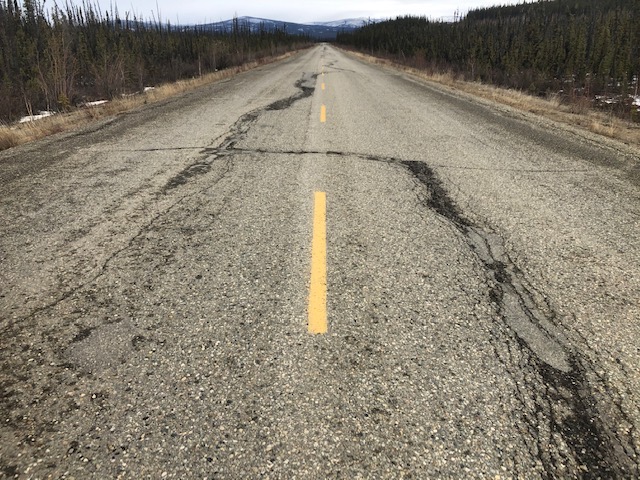
Sporadic permafrost zones
These zones have permafrost beneath 10 to 50 per cent of the surface. This zone includes the Alaska Highway between Whitehorse and Watson Lake, the South Klondike Highway and parts of the North Klondike Highway.
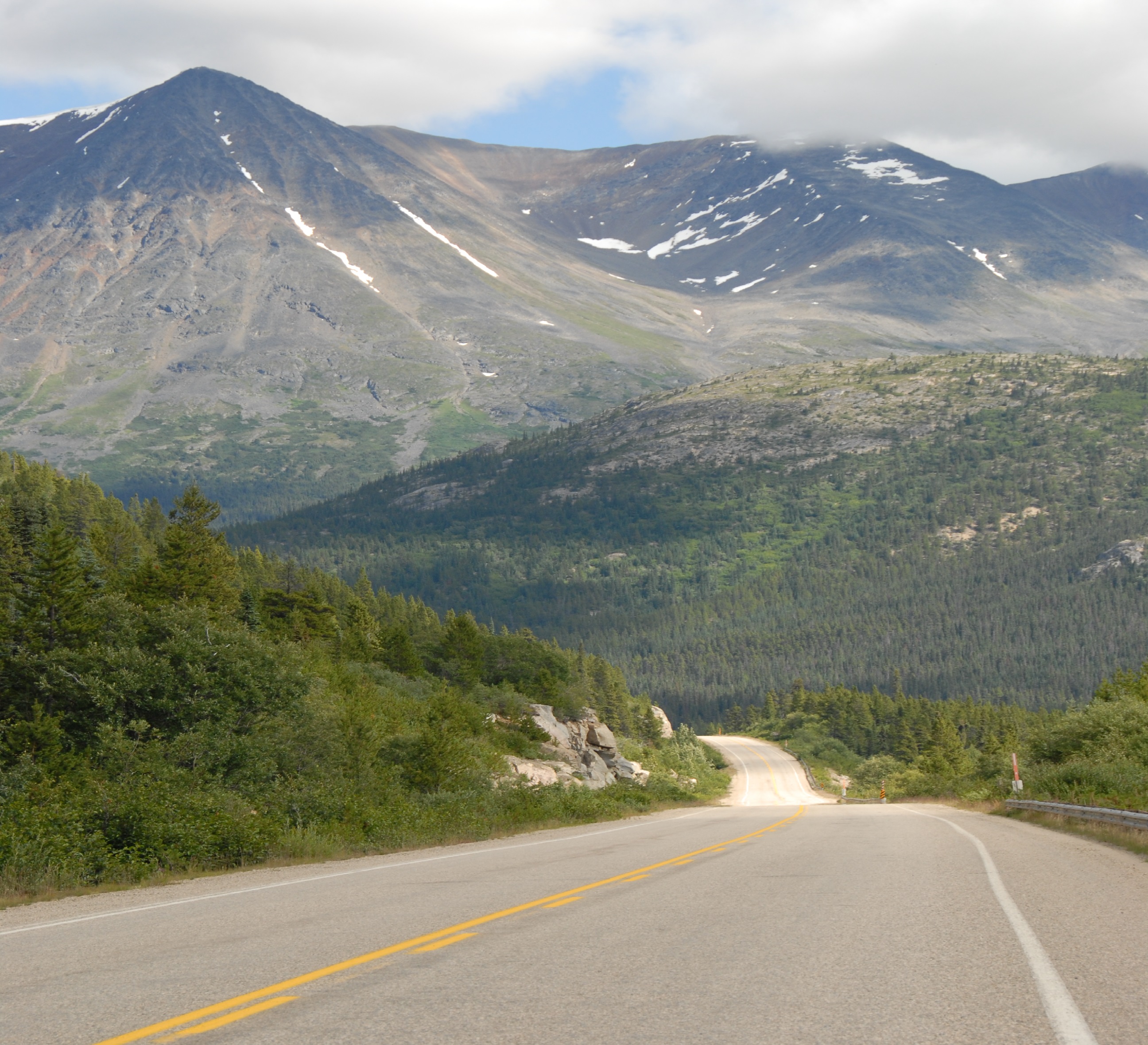
How permafrost affects our roads
Permafrost is often covered by a shallow “active layer” of ground that freezes in the winter and thaws in the summer.
When the permafrost is altered by road construction or climate change, the active layer can grow, becoming deeper. It may not re-freeze. When the ground settles, the settling may not happen evenly. This can cause the infrastructure built on top of melting permafrost to become unstable.
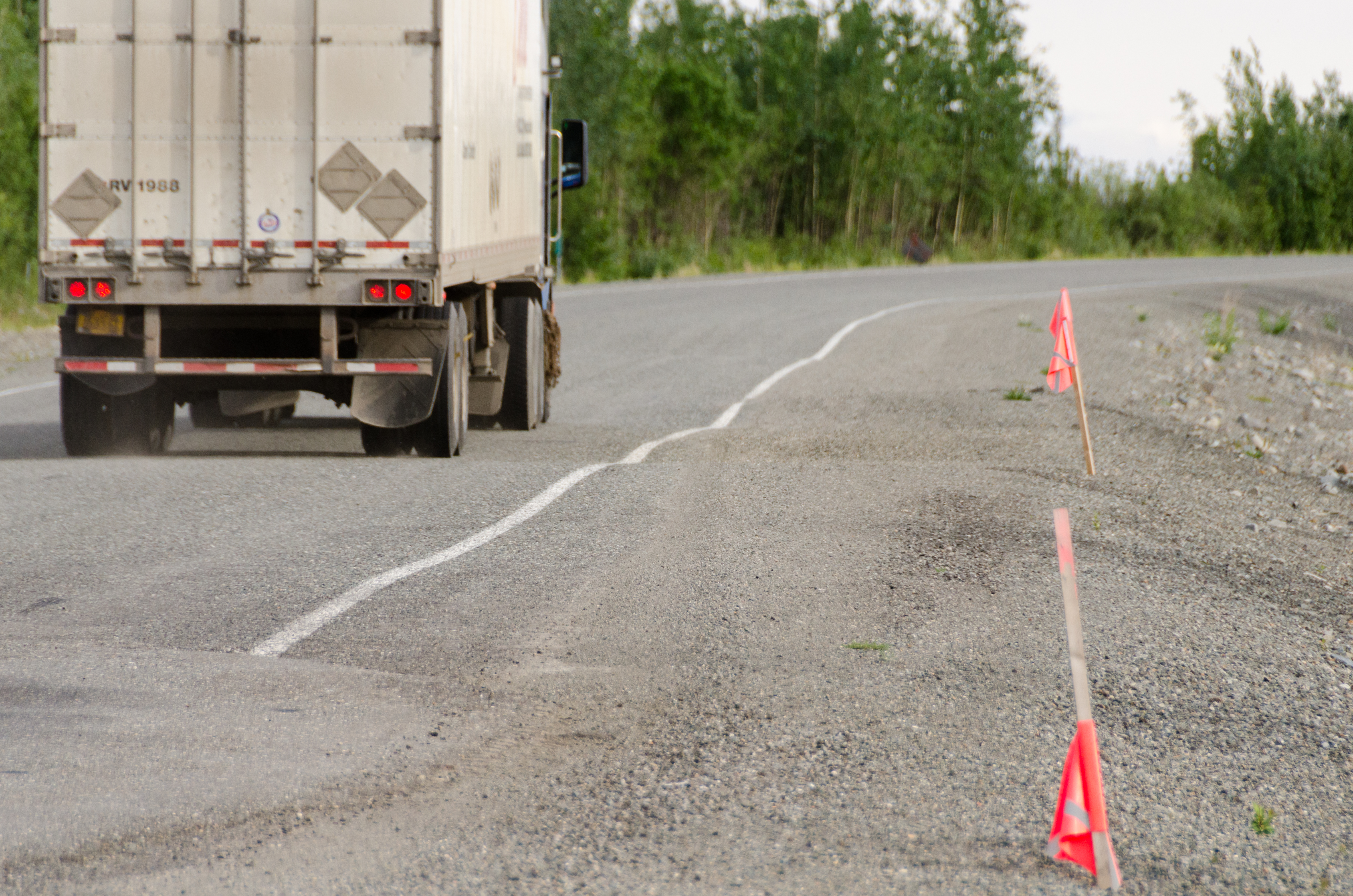
For roads, this means you could see waves and dips that make the road feel like a roller coaster.
This is especially true for the:
- Alaska Highway from Haines Junction, Yukon, to Beaver Creek, near the Alaska Border; and
- Haines Road from Haines Junction, Yukon, to Haines, Alaska.
This stretch of highway is affected by warm, ice-rich permafrost which continues to melt. The result is an exaggerated roller coaster-like road surface with cracks, potholes and frequent gravel sections. Visit the Restoring the Shakwak corridor website to learn more about this highway corridor.
Drive safely on permafrost-affected roads
While driving over permafrost-affected roads, remember that the road surface may be unpredictable. Here are some tips to follow as you travel these sections.
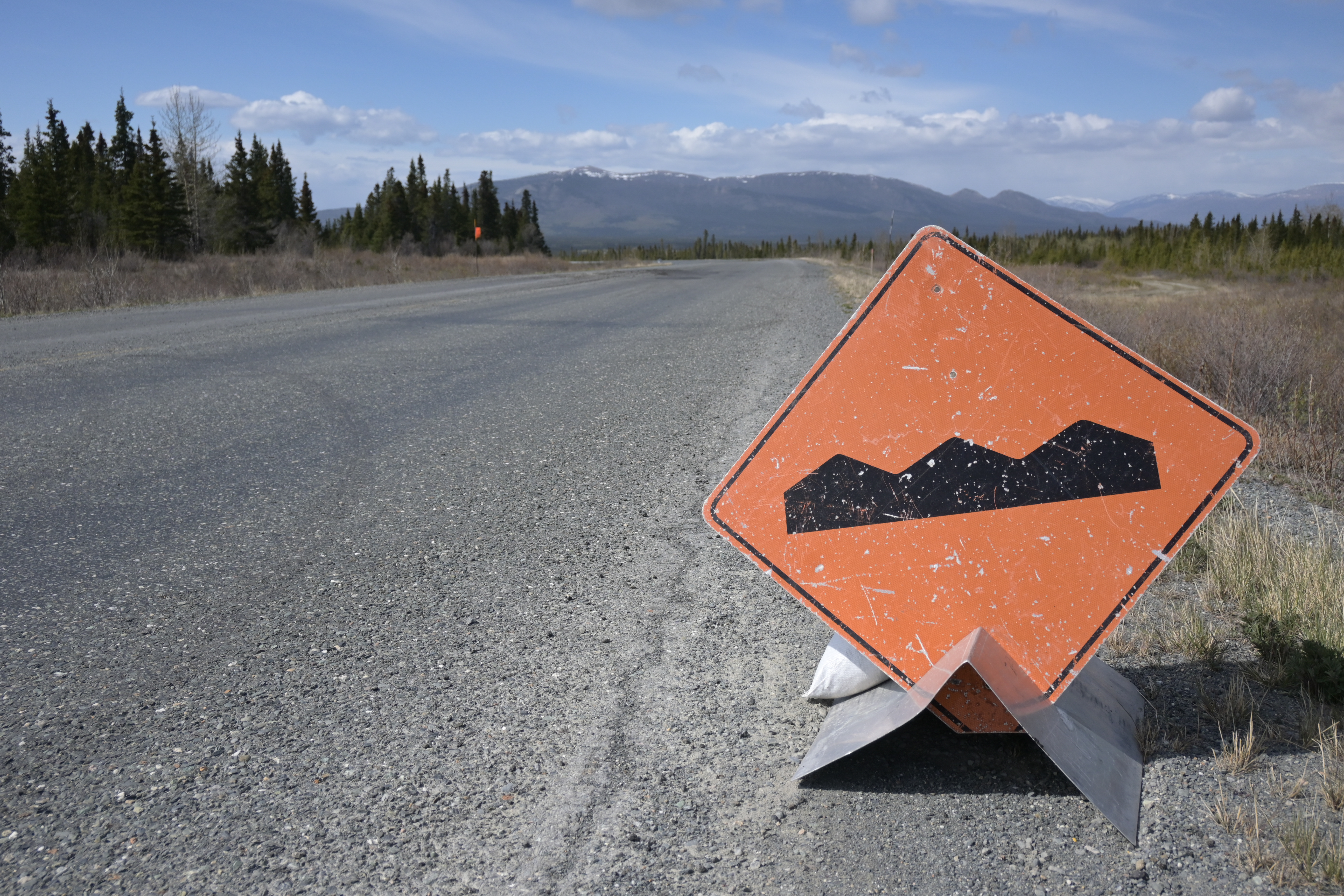
Drive with caution
Difficult road conditions caused by permafrost can be challenging even for the most experienced drivers. Adjust your driving habits in these sections to protect yourself and your vehicle.
Slow down
Allow yourself more time to avoid unexpected changes in the road surface.
Scan the road ahead
Keep an eye on the road and stay alert so that you have enough time to adjust your driving when hazards appear.
Watch for construction zones
Many permafrost-affected sections of the highway need ongoing maintenance. Keep your eye out for construction crews, reduce your speed and follow all instructions from flaggers and posted signage in the construction zone.
Learn more about construction zone safety.
Avoid passing
Some areas of permafrost-affected roads are not ideal for passing other vehicles. Avoid passing in these rougher sections.
Do not stop or pull over
Road shoulders may be unstable in these sections. Do not stop or pull over unless it’s an emergency.
Driving on gravel roads
Gravel is loose, so your vehicle may not grip the road well. This increases the chance of sliding or skidding, making it easier to lose control of your vehicle.
Here are some tips for driving on gravel:
- Slow down and be cautious.
- Drive at a speed that allows you to stop safely for any potential dangers.
- Avoid sudden steering movements, like swerving, as they can be risky.
- Accelerate and decelerate slowly to maintain traction.
- Expect longer stopping distances due to reduced tire traction.
- Increase your following distance from other vehicles.
- Reduce speed when approaching other vehicles to avoid dust clouds that can obscure vision and protect against flying rocks that may damage headlights and windshields.
- If your vehicle starts to slide or skid, take your foot off the gas.
Always remember: speed limits are set for optimal road conditions. Always be sure to drive to conditions and remember that your vehicle will respond differently on gravel than it does on a paved road.
Slow down!
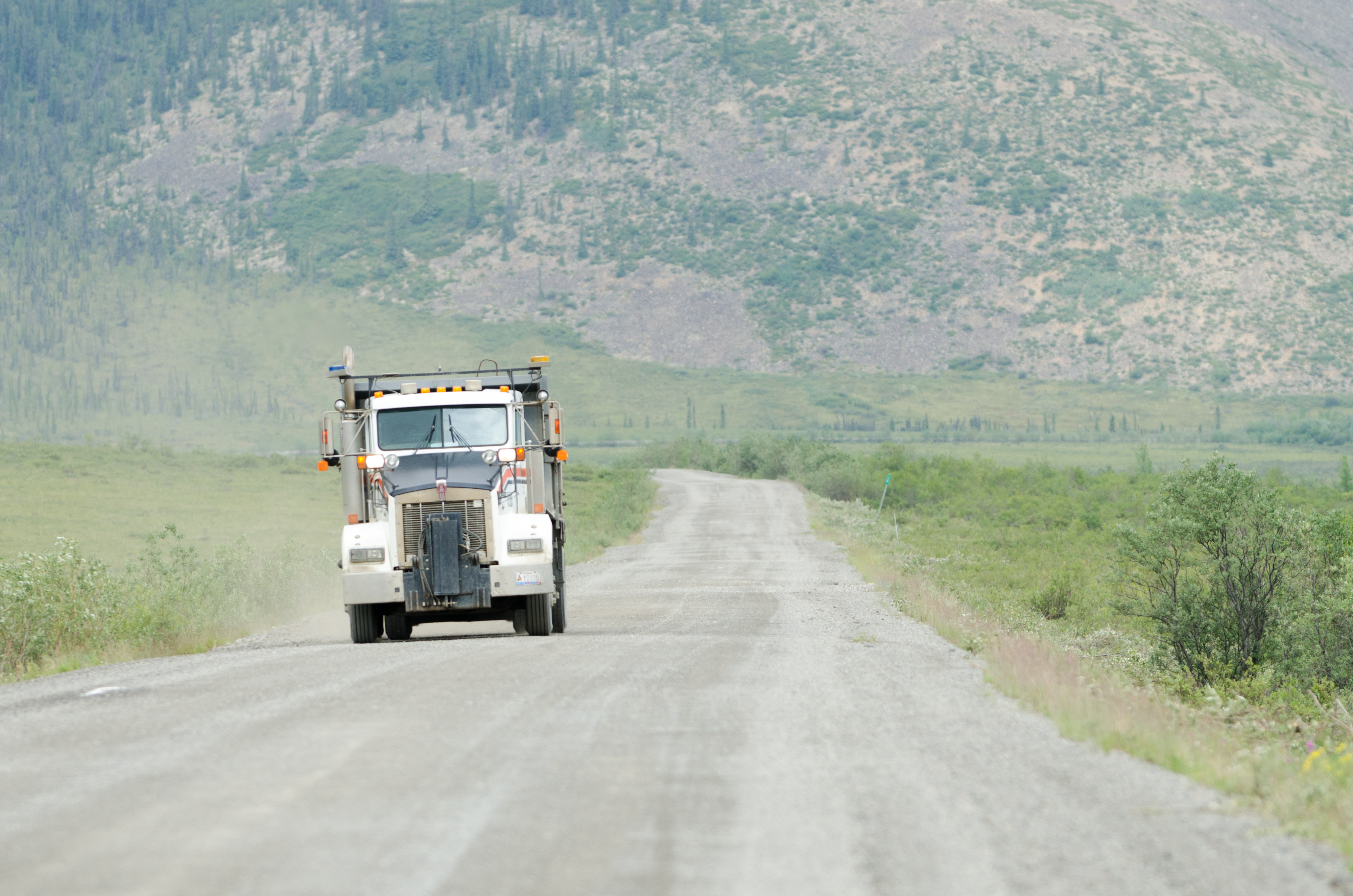
Check 511 Yukon
Before going on a trip, check road conditions using 511 Yukon.
To find out road conditions:
- visit 511yukon.ca;
- download the 511 Yukon app; or
- phone 511.
